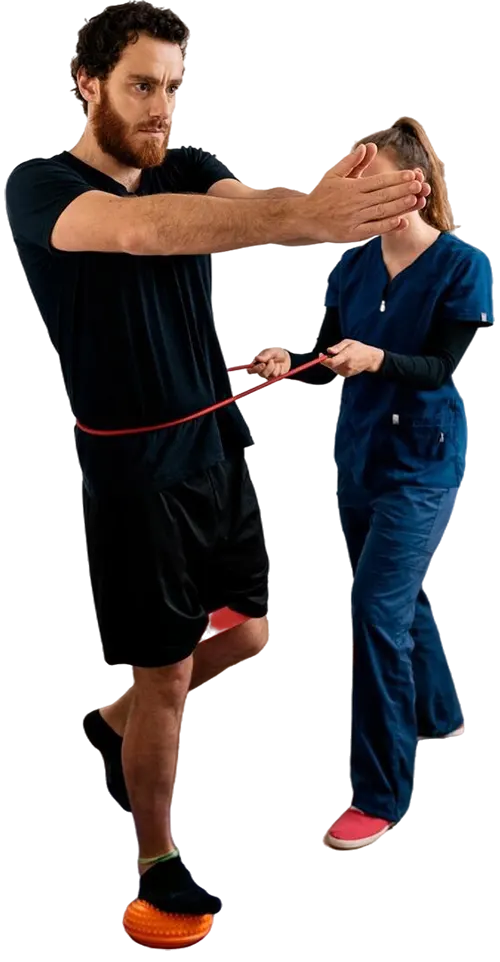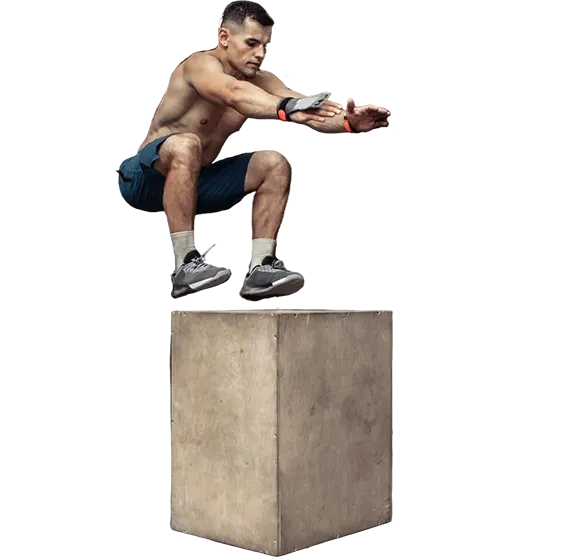Rehabilitation and Recovery
Get your basics right

In the relentless pursuit of peak performance—whether you’re an elite athlete chasing podiums or a dedicated fitness enthusiast pushing personal limits—one critical element is often underestimated: recovery and rehabilitation. In the quest for high performance recovery and rehabilitation are imperative part of your fitness strategy.
They are proactive, performance-enhancing strategies designed to:
- Restore and maintain optimal function
- Prevent chronic fatigue and overtraining
- Improve movement quality and biomechanics
Prolong athletic career and training longevity

What's the Difference?
Rehabilitation (Rehab):
Getting your body back to normal after an injury or illness with a structured plan, often with medical professionals.
- Goal: Restore optimal function after injury or illness.
- Process: Structured, often clinical, involving physiotherapist, doctors, or specialized coaches.
- Duration: Depends on the type and severity of injury.
- Application: Post-injury recovery, surgery, or chronic pain conditions.
Stages of Rehabilitation
Acute Phase (Protection & Initial Healing):
- Goal: Control pain, inflammation, and protect injured tissues.
- Interventions: RICE (Rest, Ice, Compression, Elevation), Immobilization if needed.
Subacute Phase (Restoration of Movement):
- Goal: Restore range of motion, begin gentle strengthening.
- Technique: Passive to active range of motion exercises, isometric strengthening.
Functional Phase (Strength & Neuromuscular Control)
- Goal: Build strength, stability, and motor control around injured area.
- Methods: Resistance training, proprioceptive training, basic movement patterns.
Return to Play/Return to Functional Life
- Goal: Prepare for specific sport or daily activity.
- Training: Sport-specific drills, agility work, eccentric loading, and fatigue simulation.
Injury Prevention Through Pre-habilitation
Pre-habilitation: Involves Proactive strategies to prevent injury by:
- Improving mobility and stability
- Correcting movement dysfunction
- Strengthening weak links
- Integrating functional training and neuromuscular control
Examples:
- Shoulder stability drills for swimmers
- Glute activation for runners
- Core training for lower back pain sufferers
Technology and Tools in recovery & rehab
- Wearables: (Whoop, Oura Ring): Monitor sleep, HRV, readiness.
- Normatec Compression Boots: Promote blood flow and reduce soreness
- BFR (Blood Flow Restriction): Allows strength gain at lower loads during rehab
RECOVERY
Recharging your energy and helping muscles repair after activity; an ongoing, daily or weekly process for everyone.
Key Principles – Thumb Rules
Sleep
• Why It matters: Deep sleep stages trigger growth hormone release and tissue repair.
• Recommendation: 7-9 hours for the general population, up to 10 hours for athletes.
Active Recovery
• Examples: Low intensity cycling, swimming, or walking post-training.
• Benefit: Enhances circulation, reduces muscle soreness.
Soft Tissue Work
• Tools: Foam rollers, massage guns, or manual therapy.
• Effects: Breaks up adhesions, improves mobility, and reduces tightness.
Mental recovery
• Techniques: Meditation, Breathwork, mindfulness.
• Effect: Reduces CNS fatigue, stress, and anxiety, which affect physical performance.
Nutrition
• Macronutrients: Protein for muscle repair, carbohydrates for glycogen restoration, fats for hormone balance.
• Micronutrient: Iron, Calcium, Magnesium, and Vitamin D are critical for tissue healing.
• Hydration: Essential for cellular repair and nutrient transport.
Cold and Heat Therapy
• Cold (Cryotherapy): Reduces inflammation and acute swelling.
• Heat: Increases blood flow, aids in chronic injury recovery and relaxation.
Common Mistakes in Recovery and Rehabilitation
Rehabilitation and Recovery are not just reactive tools but fundamental pillars of performance and healthy longevity. Whether you are healing from an ACL tear or managing fatigue after a tough week, your ability to recover effectively determines how far you can push your body – and how sustainably you can perform.

Neglecting rest days

Inconsistent rehab adherence

Returning to sport too soon

Over-reliance on passive treatments

Ignoring mental fatigue

Peak performance begins when you recover with intention.
Injury Is a Chapter, Not the Story.
